Find a grave in Norway
Finding a grave can be of both practical and emotional importance when you are searching for your ancestors.
This is an edit of my old article as the site “Norske gravminner” (The database of gravestone inscriptions) has undergone major changes when it comes to layout and functionality.
For privacy reasons, there are limits to the publication of records. This is why finding a gravesite can give you information about people who were born and/or died after ca. 1930.
The emotional part of finding a grave is obvious to most of us. When going on a trip to Norway it is very nice to be able to find a grave. Finding old graves can be difficult. Due to limitations in arable land In Norway, a gravesite can be reused after 20 years. This means we may not be able to find the grave of an ancestor.
People not accustomed to this practice seems to believe that the remains are removed after this time. Embalming is not common in Norway so after 20 years there is normally nothing left in the grave. If there are small remains left, these are, according to law, buried in the bottom of the new grave.
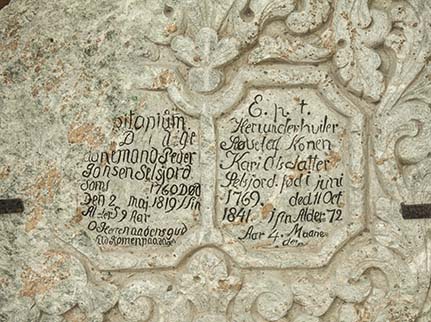
It is important to point out that nothing is removed from the old grave. I have seen people write about having seen “boneyards”. I find that hard to believe. I have never seen them, and if they exist it is in grave violation of the laws and regulations that govern Norwegian cemeteries.
The grave can be kept longer than 20 years if relatives pay for the gravesite. Often younger family members are laid to rest in an ancestor’s grave. In such cases, the names of the older generation are often included on a new headstone.
My parents rest in the graves of my great-grandparents. We kept the old headstone with the names of my g-g-parents and added a new, with the same size and style, for my parents.
In densely populated areas these rules are enforced more strictly than in rural areas. Graves are not removed until there is an actual need for space. In cemeteries in rural areas that no longer have many new burials, I suspect that headstones are left in place even if there is no one who pays the fee for the gravesite.
Headstones from graves that are removed are usually moved to a discrete location in the cemetery, giving next-of-kins an opportunity to claim it. If the stones are not claimed after a reasonable time, they are destroyed and disposed of in a way that they can no longer be recognized as a headstone.
Finn en grav
To find a grave in Norway we can use The database of gravestone inscriptions. Some of you may already be familiar with this database. In late 2020 there were some changes made that I will try to address here.
As far as I can tell, the database has no English user interface so I will be referring to the Norwegian pages.
The database can be accessed through this link.

The quickest way to search is to use this interface. The labels read:
- Søk etter person – Search for person (i.e. the name of the person we are looking for).
- Velg fylke – Choose a county
- Velg kommune – Choose a municipality
- Velg gravplass – Choose a cemetery
Searching the database is still free and open to all, but searches by name only are now reserved for logged-in members of the Norwegian genealogy association Slekt og Data”. Non-members must first choose the county and municipality.
If this simple search does not work for us, we can try the “Avansert søk” → Advanced search
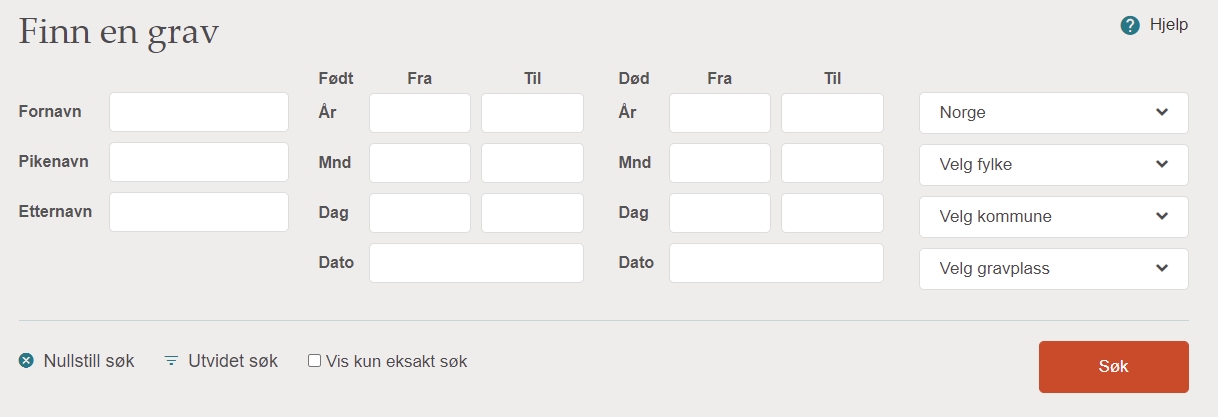
Here the new labels are (Some of this is probably self-explanatory):
- Fornavn – First name
- Pikenavn – Maiden name
- Etternavn – Surname
When searching for names we can write in parts of a name. This can be useful if we are not sure of the spelling of a name, so typing in “Paul” will give us hits on both Paul and Pauline. If we are certain about the spelling of the name we can tick off “Vis kun eksakt søk” to filter out irrelevant hits.
There is a column where we can add information about the persons time of birth:
- Født – born
- År – Year
- Mnd – Month
- Dag – (In this context) Date
- Date – Date (This brings up an option to choose the date from a calendar, which I not very useful for genealogy purposes)
All the options have a “fra” and “til” field that means “from” and “to”
In the next column, we can use the same information about the time of death (død). Again, if we are not logged in we need to choose county and municipality. We can reset the search by clicking “Nullstill søk”
There is also an option to use the “Utvidet søk” → Extended search.
This brings up this field:

Again, a little Norwegian lesson:
- Begravet – The date of the interment
- Gender
- Mann – Male
- Kvinne – Female
- Fødested – Place of birth
- Dødssted – Place of death
- Merknad – Notes/Remarks
The right-hand column deals with the placement of the grave in the cemetery. For most of us, these are very unlikely search options.
- Teig – Lot
- Felt – Area
- Rad – Row
- Gravnummer – Grave ID number
If our search yields any results (Søkeresultater), It will look like this:

We can click on the blue arrow and see details about the gravesite. If the result field has a red icon, it means there is a picture of the headstone.
The detailed gravesite information does also have some user options such as adding pictures and linking persons. I am not going into that here.
I hope this is a useful presentation of The database of gravestone inscriptions. Please comment or ask questions below if something needs clarification.
Sources
Laws:
Lov om gravplasser, kremasjon og gravferd (gravferdsloven).
Forskrift til lov om gravplasser, kremasjon og gravferd (gravferdsforskriften)

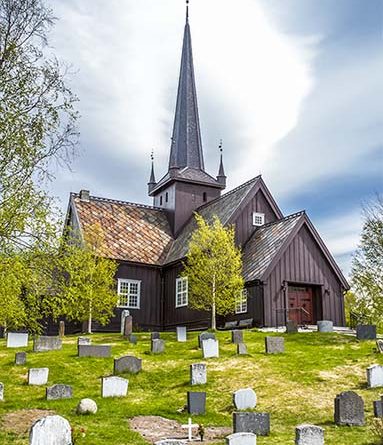

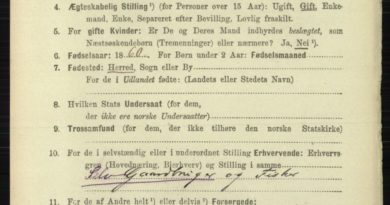

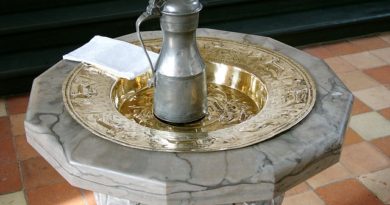
I had a general idea about gravesites in Norway, but this article was helpful in filling in the gaps. With regard to Finn en grav, which is similar to Find a Grave available in the states, I’ve found it frustrating to search for Norwegians when I don’t know the kommune or gravplass. I wonder how many others have been experiencing the same. The previous gravminner I Norge (Dis-Norge) was much easier to navigate (at least for me). Any thoughts on that, Martin?
Hello Dave
You are right that the previous version had more flexible search possibilities. The same options are still there but they are reserved for the members of the Norwegian genealogy organization “Slekt og Data”
I’ve figured out somewhat of a workaround because in most cases I know where my norske slekt lived and most likely died. But it still can be a tedious process to locate someone IF they are in the Finn en grav database. Previously non members could post on the forum I discovered my previous brukernavn og passord no longer work and now membership is required. But I understand that there are expenses to host the site so I understand the reasoning for the change. Fortunately there are other useful groups where one can request help. Takk skal du ha, Martin!